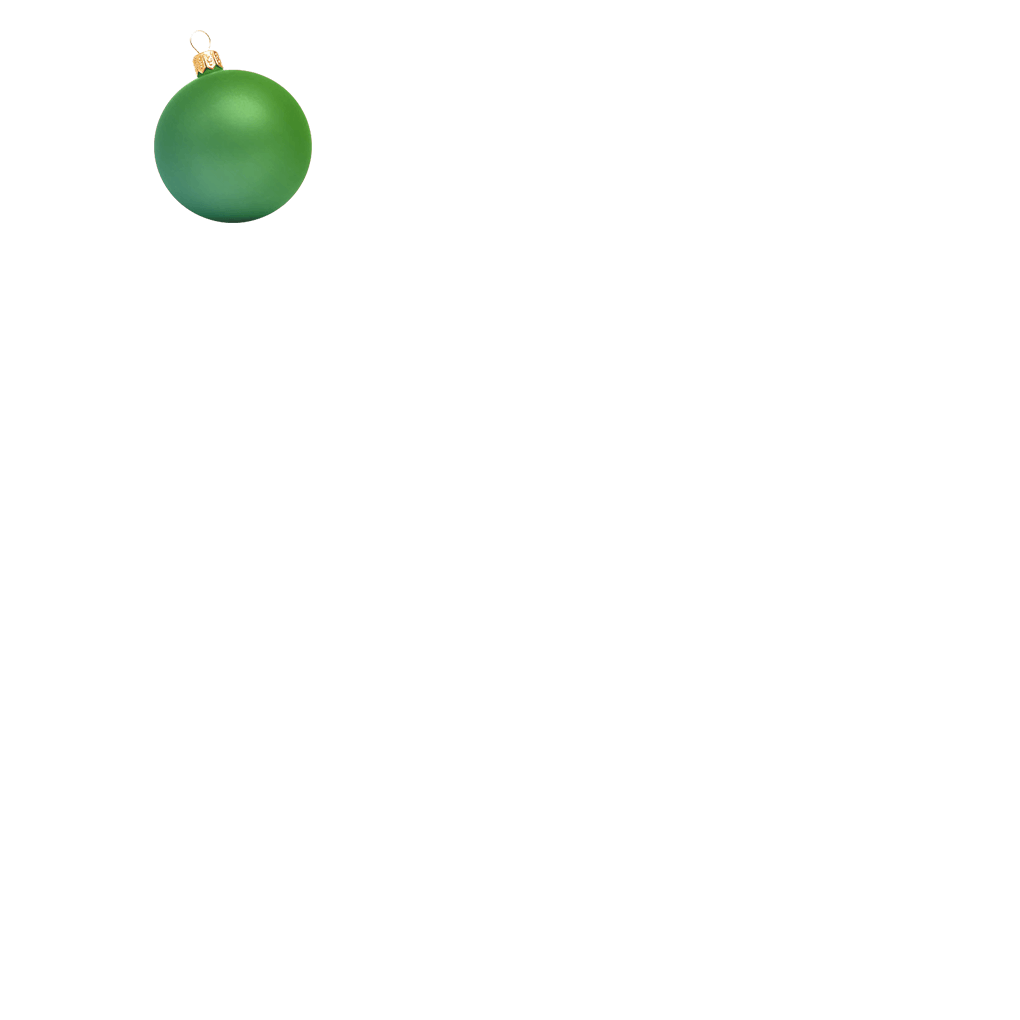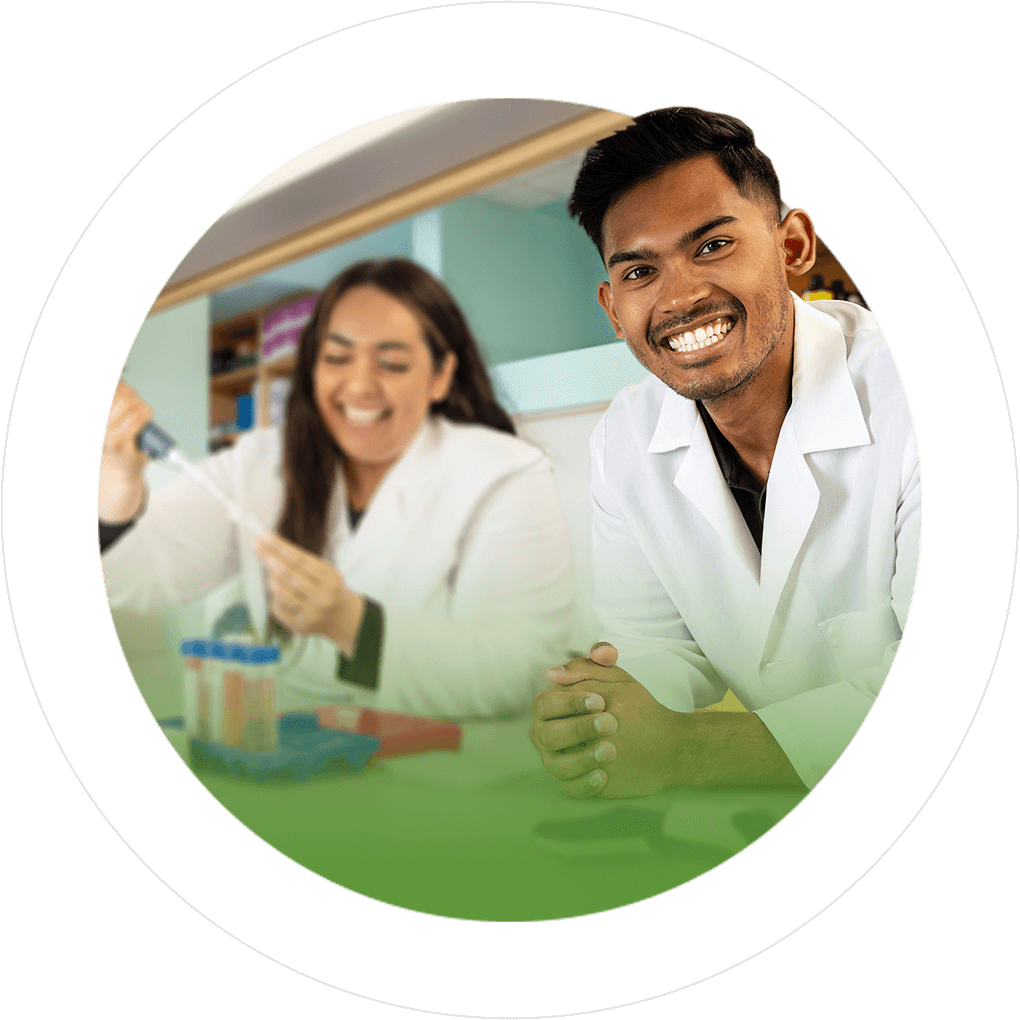Publications
Scholarly Journals--Published
- Calame DG, Wong JH, Panda P, Nguyen DT, Leong NCP, Sangermano R, Patankar SG, Abdel-Hamid MS, AlAbdi L, Safwat S, Flannery KP, Dardas Z, Fatih JM, Murali C, Kannan V, Lotze TE, Herman I, Ammouri F, Rezich B, Efthymiou S, Alavi S, Murphy D, Firoozfar Z, Nasab ME, Bahreini A, Ghasemi M, Haridy NA, Goldouzi HR, Eghbal F, Karimiani EG, Begtrup A, Elloumi H, Srinivasan VM, Gowda VK, Du H, Jhangiani SN, Coban-Akdemir Z, Marafi D, Rodan L, Isikay S, Rosenfeld JA, Ramanathan S, Staton M, Oberg KC, Clark RD, Wenman C, Loughlin S, Saad R, Ashraf T, Male A, Tadros S, Boostani R, Abdel-Salam GMH, Zaki M, Mardi A, Hashemi-Gorji F, Abdalla E, Manzini MC, Pehlivan D, Posey JE, Gibbs RA, Houlden H, Alkuraya FS, Bujakowska K, Maroofian R, Lupski JR, Nguyen LN. Biallelic variation in the choline and ethanolamine transporter FLVCR1 underlies a severe developmental disorder spectrum. Genet Med. 2025 Jan;27(1):101273. doi: 10.1016/j.gim.2024.101273. Epub 2024 Sep 19. PMID: 39306721. Abstract Purpose: FLVCR1 encodes a solute carrier protein implicated in heme, choline, and ethanolamine transport. Although Flvcr1-/- mice exhibit skeletal malformations and defective erythropoiesis reminiscent of Diamond-Blackfan anemia (DBA), biallelic FLVCR1 variants in humans have previously only been linked to childhood or adult-onset ataxia, sensory neuropathy, and retinitis pigmentosa. Methods: We identified individuals with undiagnosed neurodevelopmental disorders and biallelic FLVCR1 variants through international data sharing and characterized the functional consequences of their FLVCR1 variants. Results: We ascertained 30 patients from 23 unrelated families with biallelic FLVCR1 variants and characterized a novel FLVCR1-related phenotype: severe developmental disorders with profound developmental delay, microcephaly (z-score -2.5 to -10.5), brain malformations, epilepsy, spasticity, and premature death. Brain malformations ranged from mild brain volume reduction to hydranencephaly. Severely affected patients share traits, including macrocytic anemia and skeletal malformations, with Flvcr1-/- mice and DBA. FLVCR1 variants significantly reduce choline and ethanolamine transport and/or disrupt mRNA splicing. Conclusion: These data demonstrate a broad FLVCR1-related phenotypic spectrum ranging from severe multiorgan developmental disorders resembling DBA to adult-onset neurodegeneration. Our study expands our understanding of Mendelian choline and ethanolamine disorders and illustrates the importance of anticipating a wide phenotypic spectrum for known disease genes and incorporating model organism data into genome analysis to maximize genetic testing yield. (01/2025) (link)
- Kaur M, Blair J, Devkota B, Fortunato S, Clark D, Lawrence A, Kim J, Do W, Semeo B, Katz O, Mehta D, Yamamoto N, Schindler E, Al Rawi Z, Wallace N, Wilde JJ, McCallum J, Liu J, Xu D, Jackson M, Rentas S, Tayoun AA, Zhe Z, Abdul-Rahman O, Allen B, Angula MA, Anyane-Yeboa K, Argente J, Arn PH, Armstrong L, Basel-Salmon L, Baynam G, Bird LM, Bruegger D, Ch'ng GS, Chitayat D, Clark R, Cox GF, Dave U, DeBaere E, Field M, Graham JM Jr, Gripp KW, Greenstein R, Gupta N, Heidenreich R, Hoffman J, Hopkin RJ, Jones KL, Jones MC, Kariminejad A, Kogan J, Lace B, Leroy J, Lynch SA, McDonald M, Meagher K, Mendelsohn N, Micule I, Moeschler J, Nampoothiri S, Ohashi K, Powell CM, Ramanathan S, Raskin S, Roeder E, Rio M, Rope AF, Sangha K, Scheuerle AE, Schneider A, Shalev S, Siu V, Smith R, Stevens C, Tkemaladze T, Toimie J, Toriello H, Turner A, Wheeler PG, White SM, Young T, Loomes KM, Pipan M, Harrington AT, Zackai E, Rajagopalan R, Conlin L, Deardorff MA, McEldrew D, Pie J, Ramos F, Musio A, Kline AD, Izumi K, Raible SE, Krantz ID. Genomic analyses in Cornelia de Lange Syndrome and related diagnoses: Novel candidate genes, genotype-phenotype correlations and common mechanisms. Am J Med Genet A. 2023 Aug;191(8):2113-2131. doi: 10.1002/ajmg.a.63247. Epub 2023 Jun 28. PMID: 37377026; PMCID: PMC10524367. Abstract Cornelia de Lange Syndrome (CdLS) is a rare, dominantly inherited multisystem developmental disorder characterized by highly variable manifestations of growth and developmental delays, upper limb involvement, hypertrichosis, cardiac, gastrointestinal, craniofacial, and other systemic features. Pathogenic variants in genes encoding cohesin complex structural subunits and regulatory proteins (NIPBL, SMC1A, SMC3, HDAC8, and RAD21) are the major pathogenic contributors to CdLS. Heterozygous or hemizygous variants in the genes encoding these five proteins have been found to be contributory to CdLS, with variants in NIPBL accounting for the majority (>60%) of cases, and the only gene identified to date that results in the severe or classic form of CdLS when mutated. Pathogenic variants in cohesin genes other than NIPBL tend to result in a less severe phenotype. Causative variants in additional genes, such as ANKRD11, EP300, AFF4, TAF1, and BRD4, can cause a CdLS-like phenotype. The common role that these genes, and others, play as critical regulators of developmental transcriptional control has led to the conditions they cause being referred to as disorders of transcriptional regulation (or "DTRs"). Here, we report the results of a comprehensive molecular analysis in a cohort of 716 probands with typical and atypical CdLS in order to delineate the genetic contribution of causative variants in cohesin complex genes as well as novel candidate genes, genotype-phenotype correlations, and the utility of genome sequencing in understanding the mutational landscape in this population. (08/2023) (link)
- Velmans C, O'Donnell-Luria AH, Argilli E, Tran Mau-Them F, Vitobello A, Chan MC, Fung JL, Rech M, Abicht A, Aubert Mucca M, Carmichael J, Chassaing N, Clark R, Coubes C, Denommé-Pichon AS, de Dios JK, England E, Funalot B, Gerard M, Joseph M, Kennedy C, Kumps C, Willems M, van de Laar IMBH, Aarts-Tesselaar C, van Slegtenhorst M, Lehalle D, Leppig K, Lessmeier L, Pais LS, Paterson H, Ramanathan S, Rodan LH, Superti-Furga A, Chung BHY, Sherr E, Netzer C, Schaaf CP, Erger F. O'Donnell-Luria-Rodan syndrome: description of a second multinational cohort and refinement of the phenotypic spectrum. J Med Genet. 2022 Jul;59(7):697-705. doi: 10.1136/jmedgenet-2020-107470. Epub 2021 Jul 28. PMID: 34321323; PMCID: PMC10256139. Abstract Background: O'Donnell-Luria-Rodan syndrome (ODLURO) is an autosomal-dominant neurodevelopmental disorder caused by pathogenic, mostly truncating variants in KMT2E. It was first described by O'Donnell-Luria et al in 2019 in a cohort of 38 patients. Clinical features encompass macrocephaly, mild intellectual disability (ID), autism spectrum disorder (ASD) susceptibility and seizure susceptibility. Methods: Affected individuals were ascertained at paediatric and genetic centres in various countries by diagnostic chromosome microarray or exome/genome sequencing. Patients were collected into a case cohort and were systematically phenotyped where possible. Results: We report 18 additional patients from 17 families with genetically confirmed ODLURO. We identified 15 different heterozygous likely pathogenic or pathogenic sequence variants (14 novel) and two partial microdeletions of KMT2E. We confirm and refine the phenotypic spectrum of the KMT2E-related neurodevelopmental disorder, especially concerning cognitive development, with rather mild ID and macrocephaly with subtle facial features in most patients. We observe a high prevalence of ASD in our cohort (41%), while seizures are present in only two patients. We extend the phenotypic spectrum by sleep disturbances. Conclusion: Our study, bringing the total of known patients with ODLURO to more than 60 within 2 years of the first publication, suggests an unexpectedly high relative frequency of this syndrome worldwide. It seems likely that ODLURO, although just recently described, is among the more common single-gene aetiologies of neurodevelopmental delay and ASD. We present the second systematic case series of patients with ODLURO, further refining the mutational and phenotypic spectrum of this not-so-rare syndrome. (07/2022) (link)
- Yabumoto M, Kianmahd J, Singh M, Palafox MF, Wei A, Elliott K, Goodloe DH, Dean SJ, Gooch C, Murray BK, Swartz E, Schrier Vergano SA, Towne MC, Nugent K, Roeder ER, Kresge C, Pletcher BA, Grand K, Graham JM Jr, Gates R, Gomez-Ospina N, Ramanathan S, Clark RD, Glaser K, Benke PJ, Cohen JS, Fatemi A, Mu W, Baranano KW, Madden JA, Gubbels CS, Yu TW, Agrawal PB, Chambers MK, Phornphutkul C, Pugh JA, Tauber KA, Azova S, Smith JR, O'Donnell-Luria A, Medsker H, Srivastava S, Krakow D, Schweitzer DN, Arboleda VA. Novel variants in KAT6B spectrum of disorders expand our knowledge of clinical manifestations and molecular mechanisms. Mol Genet Genomic Med. 2021 Oct;9(10):e1809. doi: 10.1002/mgg3.1809. Epub 2021 Sep 14. PMID: 34519438; PMCID: PMC8580094. The phenotypic variability associated with pathogenic variants in Lysine Acetyltransferase 6B (KAT6B, a.k.a. MORF, MYST4) results in several interrelated syndromes including Say-Barber-Biesecker-Young-Simpson Syndrome and Genitopatellar Syndrome. Here we present 20 new cases representing 10 novel KAT6B variants. These patients exhibit a range of clinical phenotypes including intellectual disability, mobility and language difficulties, craniofacial dysmorphology, and skeletal anomalies. Given the range of features previously described for KAT6B-related syndromes, we have identified additional phenotypes including concern for keratoconus, sensitivity to light or noise, recurring infections, and fractures in greater numbers than previously reported. We surveyed clinicians to qualitatively assess the ways families engage with genetic counselors upon diagnosis. We found that 56% (10/18) of individuals receive diagnoses before the age of 2 years (median age = 1.96 years), making it challenging to address future complications with limited accessible information and vast phenotypic severity. We used CRISPR to introduce truncating variants into the KAT6B gene in model cell lines and performed chromatin accessibility and transcriptome sequencing to identify key dysregulated pathways. This study expands the clinical spectrum and addresses the challenges to management and genetic counseling for patients with KAT6B-related disorders. (10/2021) (link)
- Palmer, E. E., Whitton, C., Hashem, M. O., Clark, R. D., Ramanathan, S., Starr, L. J., Velasco, D., De Dios, J. K., Singh, E., Cormier-Daire, V., Chopra, M., Rodan, L. H., Nellaker, C., Lakhani, S., Mallack, E. J., Panzer, K., Sidhu, A., Wentzensen, I. M., Lacombe, D., ... Alkuraya, F. S. (2021). CHEDDA syndrome is an underrecognized neurodevelopmental disorder with a highly restricted ATN1 mutation spectrum. Clinical Genetics, 100(4), 468-477. https://doi.org/10.1111/cge.14022 Abstract We describe the clinical features of nine unrelated individuals with rare de novo missense or in-frame deletions/duplications within the "HX motif" of exon 7 of ATN1. We previously proposed that individuals with such variants should be considered as being affected by the syndromic condition of congenital hypotonia, epilepsy, developmental delay, and digital anomalies (CHEDDA), distinct from dentatorubral-pallidoluysian atrophy (DRPLA) secondary to expansion variants in exon 5 of ATN1. We confirm that the universal phenotypic features of CHEDDA are distinctive facial features and global developmental delay. Infantile hypotonia and minor hand and feet differences are common and can present as arthrogryposis. Common comorbidities include severe feeding difficulties, often requiring gastrostomy support, as well as visual and hearing impairments. Epilepsy and congenital malformations of the brain, heart, and genitourinary systems are frequent but not universal. Our study confirms the clinical entity of CHEDDA secondary to a mutational signature restricted to exon 7 of ATN1. We propose a clinical schedule for assessment upon diagnosis, surveillance, and early intervention including the potential of neuroimaging for prognostication. (10/2021) (link)
- Stokes, B., Berger, S. I., Hall, B. A., Weiss, K., Martinez, A. F., Hadley, D. W., Murdock, D. R., Ramanathan, S., Clark, R. D., Roessler, E., Kruszka, P., & Muenke, M. (2018). SIX3 deletions and incomplete penetrance in families affected by holoprosencephaly. Congenital Anomalies, 58(1), 29-32. https://doi.org/10.1111/cga.12234 Holoprosencephaly (HPE) is failure of the forebrain to divide completely during embryogenesis. Incomplete penetrance has not been reported previously in SIX3 whole gene deletions, which are known to cause HPE. Both chromosomal microarray and whole exome sequencing (WES) were used to evaluate families with inherited HPE. Two families showed inherited deletions that contain SIX3 and were incompletely penetrant for HPE. Using WES, we ruled out parental mosaicism, a SIX3 hypomorph, and clinically significant variants in genes that are known to interact with SIX3 as causes of incomplete penetrance. We demonstrate the importance of molecular cascade testing in families with HPE and we answer important questions about incomplete penetrance. (01/2018) (link)
- Lindstrand, A., Davis, E. E., Carvalho, C. M. B., Pehlivan, D., Willer, J. R., Tsai, I. C., Ramanathan, S., Zuppan, C., Sabo, A., Muzny, D., Gibbs, R., Liu, P., Lewis, R. A., Banin, E., Lupski, J. R., Clark, R., & Katsanis, N. (2014). Recurrent CNVs and SNVs at the NPHP1 locus contribute pathogenic alleles to Bardet-Biedl syndrome. American Journal of Human Genetics, 94(5), 745-754. https://doi.org/10.1016/j.ajhg.2014.03.017 Homozygosity for a recurrent 290 kb deletion of NPHP1 is the most frequent cause of isolated nephronophthisis (NPHP) in humans. A deletion of the same genomic interval has also been detected in individuals with Joubert syndrome (JBTS), and in the mouse, Nphp1 interacts genetically with Ahi1, a known JBTS locus. Given these observations, we investigated the contribution of NPHP1 in Bardet-Biedl syndrome (BBS), a ciliopathy of intermediate severity. By using a combination of array-comparative genomic hybridization, TaqMan copy number assays, and sequencing, we studied 200 families affected by BBS. We report a homozygous NPHP1 deletion CNV in a family with classical BBS that is transmitted with autosomal-recessive inheritance. Further, we identified heterozygous NPHP1 deletions in two more unrelated persons with BBS who bear primary mutations at another BBS locus. In parallel, we identified five families harboring an SNV in NPHP1 resulting in a conserved missense change, c.14G>T (p.Arg5Leu), that is enriched in our Hispanic pedigrees; in each case, affected individuals carried additional bona fide pathogenic alleles in another BBS gene. In vivo functional modeling in zebrafish embryos demonstrated that c.14G>T is a loss-of-function variant, and suppression of nphp1 in concert with each of the primary BBS loci found in our NPHP1-positive pedigrees exacerbated the severity of the phenotype. These results suggest that NPHP1 mutations are probably rare primary causes of BBS that contribute to the mutational burden of the disorder. © 2014 The American Society of Human Genetics. (05/2014) (link)
- Muller, E. A., Aradhya, S., Atkin, J. F., Carmany, E. P., Elliott, A. M., Chudley, A. E., Clark, R. D., Everman, D. B., Garner, S., Hall, B. D., Herman, G. E., Kivuva, E., Ramanathan, S., Stevenson, D. A., Stockton, D. W., & Hudgins, L. (2012). Microdeletion 9q22.3 syndrome includes metopic craniosynostosis, hydrocephalus, macrosomia, and developmental delay. American Journal of Medical Genetics, Part A, 158 A(2), 391-399. https://doi.org/10.1002/ajmg.a.34216 Basal cell nevus syndrome (BCNS), also known as Gorlin syndrome (OMIM #109400) is a well-described rare autosomal dominant condition due to haploinsufficiency of PTCH1. With the availability of comparative genomic hybridization arrays, increasing numbers of individuals with microdeletions involving this locus are being identified. We present 10 previously unreported individuals with 9q22.3 deletions that include PTCH1. While 7 of the 10 patients (7 females, 3 males) did not meet strict clinical criteria for BCNS at the time of molecular diagnosis, almost all of the patients were too young to exhibit many of the diagnostic features. A number of the patients exhibited metopic craniosynostosis, severe obstructive hydrocephalus, and macrosomia, which are not typically observed in BCNS. All individuals older than a few months of age also had developmental delays and/or intellectual disability. Only facial features typical of BCNS, except in those with prominent midforeheads secondary to metopic craniosynostosis, were shared among the 10 patients. The deletions in these individuals ranged from 352kb to 20.5Mb in size, the largest spanning 9q21.33 through 9q31.2. There was significant overlap of the deleted segments among most of the patients. The smallest common regions shared among the deletions were identified in order to localize putative candidate genes that are potentially responsible for each of the non-BCNS features. These were a 929kb region for metopic craniosynostosis, a 1.08Mb region for obstructive hydrocephalus, and a 1.84Mb region for macrosomia. Additional studies are needed to further characterize the candidate genes within these regions. (02/2012) (link)
- Ramanathan, S., Woodroffe, A., Flodman, P. L., Mays, L. Z., Hanouni, M., Modahl, C. B., Steinberg-Epstein, R., Bocian, M. E., Spence, M. A., & Smith, M. (2004). A case of autism with an interstitial deletion on 4q leading to hemizygosity for genes encoding for glutamine and glycine neurotransmitter receptor sub-units (AMPA 2, GLRA3, GLRB) and neuropeptide receptors NPY1R, NPY5R. BMC Medical Genetics, 5, Article 10. https://doi.org/10.1186/1471-2350-5-10 Background: Autism is a pervasive developmental disorder characterized by a triad of deficits: qualitative impairments in social interactions, communication deficits, and repetitive and stereotyped patterns of behavior. Although autism is etiologically heterogeneous, family and twin studies have established a definite genetic basis. The inheritance of idiopathic autism is presumed to be complex, with many genes involved; environmental factors are also possibly contributory. The analysis of chromosome abnormalities associated with autism contributes greatly to the identification of autism candidate genes. Case presentation: We describe a child with autistic disorder and an interstitial deletion on chromosome 4q. This child first presented at 12 months of age with developmental delay and minor dysmorphic features. At 4 years of age a diagnosis of Pervasive Developmental Disorder was made. At 11 years of age he met diagnostic criteria for autism. Cytogenetic studies revealed a chromosome 4q deletion. The karyotype was 46, XY del 4 (q31.3-q33). Here we report the clinical phenotype of the child and the molecular characterization of the deletion using molecular cytogenetic techniques and analysis of polymorphic markers. These studies revealed a 19 megabase deletion spanning 4q32 to 4q34. Analysis of existing polymorphic markers and new markers developed in this study revealed that the deletion arose on a paternally derived chromosome. To date 33 genes of known or inferred function are deleted as a consequence of the deletion. Among these are the AMPA 2 gene that encodes the glutamate receptor GluR2 sub-unit, GLRA3 and GLRB genes that encode glycine receptor subunits and neuropeptide Y receptor genes NPY1R and NPY5R. Conclusions: The deletion in this autistic subject serves to highlight specific autism candidate genes. He is hemizygous for AMPA 2, GLRA3, GLRB, NPY1R and NPY5R. GluR2 is the major determinant of AMPA receptor structure. Glutamate receptors maintain structural and functional plasticity of synapses. Neuropeptide Y and its receptors NPY1R and NPY5R play a role in hippocampal learning and memory. Glycine receptors are expressed in very early cortical development. Molecular cytogenetic studies and DNA sequence analysis in other patients with autism will be necessary to confirm that these genes are involved in autism. (04/2004) (link)
Online Publications
- Ramanathan, S., Wang, H., & Clark, R. D. (2024). Genetics Corner: A Consultation for Joint Limitations that Developed After Birth. Neonatology Today, 19(7), 178-182. (07/2024) (link)
- Ramanathan, S., & Clark, R. D. (2024). Genetics Corner: A Consultation for Familial Polysyndactyly. Neonatology Today, 19(6), 171-174. (06/2024) (link)
- Ramanathan, S., & Clark, R. D. (2022). Genetics Corner: Mild Expression of COL7A1-Associated Epidermolysis Bullosa in a Mother and Child. Neonatology Today, 17(12), 148-151. (12/2022) (link)
- Wang, H., Ramanathan, S., Hamamura, F., & Clark, R. D. (2022). Genetics Corner: A Neonatal Case of Shwachman-Diamond Syndrome with Prominent Skeletal Anomalies Diagnosed by Whole Exome Sequencing. Neonatology Today, 17(11), 135-140. (11/2022) (link)
- Clark, R. D., & Ramanathan, S. (2022). Genetics Corner: An Infant with a Right Congenital Diaphragmatic Hernia and a Small 1h5q26.3 Deletion with Loss of IGF1R. Neonatology Today, 17(8), 149-151. (08/2022) (link)
- Clark, R. D., & Ramanathan, S. (2022). Genetics Corner: Klippel-Trenaunay Syndrome in an Infant with a Mosaic PIK3CA Variant, a Target for the Medical Treatment of Asymmetric Overgrowth. Neonatology Today, 17(5), 145-148. (05/2022) (link)
- Ramanathan, S., & Clark, R. D. (2022). Genetics Corner: Syndromic Etiology of Apparently Isolated Clubfeet: a Child with Loeys-Dietz Syndrome. Neonatology Today, 17(4), 127-132. (04/2022) (link)
- Ramanathan, S., & Clark, R. D. (2022). Genetics Corner: “Coat-hanger” ribs and Bell-Shaped Thorax in an Infant with Paternal Uniparental Disomy for Chromosome 14. Neonatology Today, 17(1), 130-134. (01/2022) (link)
- Ramanathan, S., & Clark, R. D. (2021). Genetics Corner: Cat-Eye-Syndrome and Genetic Syndromes Associated with Ear Anomalies. Neonatology Today, 16(12), 128-132. (12/2021) (link)
- Ramanathan, S., & Clark, R. D. (2021). The Genetics Corner: A Mother and Child with Cleft lip and Palate Have an Atypical 1p36 Deletion that Disrupts KIF1B, a Cause of Autosomal Dominant Charcot-Marie-Tooth Disease, Type 2A1. Neonatology Today, 16(8), 118-121. (08/2021) (link)
- Clark, R. D., & Ramanathan, S. (2021). Genetics Corner: Multisuture Craniosynostosis Secondary to Intrauterine Constraint During Gestation in a Bicornuate Uterus. Neonatology Today, 16(6), 131-133. (06/2021) (link)
- Ramanathan, S., & Clark, R. D. (2021). The Genetics Corner: Pathogenic variants in DOCK6 mimic congenital viral infection in an SGA infant with VSD and intracranial calcifications. Neonatology Today, 16(4), 124-126. (04/2021) (link)
- Rajakumar, N., Ramanathan, S., & Clark, R. D. (2021). The Genetics Corner: The Positive Predictive Value of NIPT for 22q11 Deletion Syndrome Varies with the Indication. Neonatology Today, 16(3), 124-126. (03/2021) (link)
- Clark, R. D., & Ramanathan, S. (2021). Genetics Corner: Trichothiodystrophy 1 Causes Neutropenia in an Infant with Congenital ichthyosis and Brittle Hair. Neonatology Today, 16(1), 143-147. (01/2021) (link)
- Clark, R. D., & Ramanathan, S. (2020). Genetics Corner: Risk of Epilepsy in an Asymptomatic Infant with Prenatally Diagnosed Tuberous Sclerosis. Neonatology Today, 15(12), 111-113. (12/2020) (link)
- Ramanathan, S., & Clark, R. D. (2020). Genetics Corner: Townes-Brocks Syndrome in an Infant with Familial Imperforate Anus. Neonatology Today, 15(11), 96-98. (11/2020) (link)
- Wang, H., Rajakumar, N., Ramanathan, S., & Clark, R. D. (2020). The Genetics Corner: Hypophosphatasia. Neonatology Today, 15(10), 99-103. (10/2020) (link)
- Ramanathan, S., & Clark, R. D. (2020). The Genetics Corner: DiGeorge Anomaly Associated with Diabetic Embryopathy in an Infant without a Deletion on Chromosome 22q11. Neonatology Today, 15(9), 95-97. (09/2020) (link)
- Ramanathan, S., & Clark, R. D. (2020). Kabuki Syndrome in a Newborn with a Complex Left-Sided Cardiac Lesion and Persistent Hypoglycemia due to Hyperinsulinism. Neonatology Today, 15(6), 104-105. (06/2020) (link)
- Ramanathan, S., Wood, M., & Clark, R. D. (2020). The Genetics Corner: A Consultation for Neonatal Diabetes Mellitus Reveals Uniparental Disomy 6. Neonatology Today, 15(5), 82-84. (05/2020) (link)
- Clark, R. D., & Ramanathan, S. (2020). The Genetics Corner: Perisylvian Polymicrogyria and Seizures in One of Monochorionic Diamniotic Twins Following Twin-Twin-Transfusion Syndrome and in utero Laser Ablation Therapy. Neonatology Today, 15(4), 71-74. (04/2020) (link)
- Clark, R. D., Ramanathan, S., & Hernandez, D. (2020). Genetics Corner: A Lethal Ciliopathy Affects Two Siblings with Renal Dysplasia and Oligohydramnios. Neonatology Today, 15(3), 66-69. (03/2020) (link)
- Hernandez, D., Ramanathan, S., & Clark, R. D. (2019). Genetics Corner: A Consultation for Wolf-Hirschhorn Syndrome. Neonatology Today, 14(11), 79-82. (11/2019) (link)
- Hernandez, D., Clark, R. D., & Ramanathan, S. (2019). Genetics Corner: Translocation Down syndrome. Neonatology Today, 14(10), 72-74. (10/2019) (link)
- Clark, R. D., Hernandez, D., & Ramanathan, S. (2019). Genetics Corner: Down Syndrome Tool Kit- a Resource for Physicians Taking Care of Neonates. Neonatology Today, 14(9), 83-87. (09/2019) (link)
- Ramanathan, S., & Clark, R. D. (2019). The Genetics Corner: A Consultation for Multiple Congenital Anomalies. Neonatology Today, 14(5), 75-79. (05/2019) (link)
- Ramanathan, S., & Clark, R. D. (2019). The Genetics Corner: A Genetics Consultation for Agenesis Cutis Congenita and Methimazole Exposure. Neonatology Today, 14(4), 57-59. (04/2019) (link)
- Ramanathan, S., & Clark, R. D. (2019). The Genetics Corner: A Genetics Evaluation for Chronic Diarrhea that Revealed Incest. Neonatology Today, 14(3), 67-68. (03/2019) (link)
- Clark, R. D., & Ramanathan, S. (2019). The Genetics Corner: A Genetics Consultation for Agenesis of the Corpus Callosum and Poor Feeding. Neonatology Today, 14(2), 59-61. (02/2019) (link)
- Clark, R. D., & Ramanathan, S. (2019). The Genetics Corner: A Genetics Consultation for Congenital Syphilis. Neonatology Today, 14(1), 61-63. (01/2019) (link)
- Ramanathan, S., & Clark, R. D. (2018). The Genetics Corner: A Genetics Consultation for Heterotaxy. (12/2018) (link)
- Clark, R. D., & Ramanathan, S. (2018). A genetics consultation for multiple congenital dislocations. Neonatology Today, 13(11), 57-59. (11/2018) (link)
- Ramanathan, S., & Clark, R. D. (2018). A Genetics Consultation for Family History of Hearing Loss. (10/2018) (link)
- Ramanathan, S., & Clark, R. D. (2018). The Genetics Corner: A Genetics Consultation for Microtia, ASD and IUGR. Neonatology Today, 13(9), 59-60. (09/2018) (link)
- Ramanathan, S., Marchosky, R., & Clark, R. D. (2018). The Genetics Corner: A Consultation for Orofacial Cleft: Van der Woude Syndrome. Neonatology Today, 13(7), 46-47 (07/2018) (link)
- Ramanathan, S., & Clark, R. D. (2018). The Genetics Corner: A Consultation for Metopic Craniosynostosis and Skeletal Anomalies. Neonatology Today, 13(6), 48-50. (06/2018) (link)










